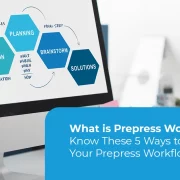How to Create eLearning Content Using an Authoring Tool
[vc_row][vc_column][vc_column_text]Every organization wants to create content that is unique to their needs and can upskill the learners. But creating content is not an easy task. Content creation requires an effective collaboration between the subject matter experts, instructional designers, and instructors. While creating digital content, the app developers are also often part of this collaboration. Their expertise is usually leveraged while developing content using an authoring tool. [/vc_column_text][vc_custom_heading text=”What is an authoring tool?” font_container=”tag:h1|font_size:18|text_align:left” google_fonts=”font_family:Lato%3A100%2C100italic%2C300%2C300italic%2Cregular%2Citalic%2C700%2C700italic%2C900%2C900italic|font_style:900%20bold%20regular%3A900%3Anormal” css=”.vc_custom_1624724202262{margin-top: 0px !important;margin-bottom: 0px !important;border-top-width: 0px !important;border-bottom-width: 0px !important;padding-top: 0px !important;padding-bottom: 10px !important;}”][vc_column_text]An authoring tool helps you create online learning content. It is a software application that makes the content creation process more efficient and less time-consuming.
Basically, adding elements to pages and making constant edits can take up as much time as a developer trying to code everything into place. However, with an authoring tool, you can make these changes with just a few clicks of your mouse. All these pieces of code have been pre-programmed into the software so that you don’t need the technical knowledge to understand and use them.[/vc_column_text][vc_custom_heading text=”Let’s look at how you can create digital content using an authoring tool.” font_container=”tag:h2|font_size:18|text_align:left” google_fonts=”font_family:Lato%3A100%2C100italic%2C300%2C300italic%2Cregular%2Citalic%2C700%2C700italic%2C900%2C900italic|font_style:900%20bold%20regular%3A900%3Anormal” css=”.vc_custom_1624724274834{margin-top: 0px !important;margin-bottom: 0px !important;border-top-width: 0px !important;border-bottom-width: 0px !important;padding-top: 0px !important;padding-bottom: 10px !important;}”][vc_column_text]1. Create or upload text and multimedia content
You can either create content from scratch, which is a time-consuming process, or upload the content existing in different formats onto the authoring platform. Some authoring tools allow users to upload multiple file formats such as txt, Word, PDF etc.
Also, rather than just placing a load of informational text in the course, you can make it a lot more interesting by creating microlearning content. The concept of microlearning involves breaking down large pieces of information into small chunks that are easy to understand. Microlearning provides just-in-time information that is very specific to what the learner wants to learn. These learning nuggets are usually not more than 3-5 minutes long.
You can also add images, videos, audio, and other elements to your content. This will support students to better understand what is being taught. For example, if you want to mention a specific philosopher from history, you could play an audio file of an idea/quote they may have said. This makes the content more engaging and original.
2. Add interactive features and widgets
By adding interactive elements such as clickable buttons & links, sliders, drag and drop questions, and so on, you can keep the learners involved in the learning process. These elements can be added to each page, compelling learners to take an action and proceed to the next page. With multiple interactive features in the course, when the learners access the content on their e-readers, they will be more invested in completing the program and understanding what is being taught.
3. Fix a theme
Depending on your need, you will need to brand your course in a particular way that is going to differentiate you from others while also making it look appealing and interesting. You will need to make your course look consistent and the best way to do this would be using a template or theme that is offered by the authoring tool you use.
Having a template in place will dramatically reduce your workload and you only need to focus on creating the content. From the learner’s point of view, they will not be constantly distracted by the varying design elements of the page and can focus on the content. If need be, you can even create your own theme to match your brand, but this can be time-consuming and for most users, selecting an existing in-built theme would be the best option.
4. Define user roles
When you are creating a full course, it is likely that you will not be working all by yourself. There may be multiple users working together on different elements. By using an authoring tool that has the capability of allowing multiple users to work together on the same project at the same time, the work will flow much more easily.
You can have options such as user roles where each user is given access to specific functions, co-authoring options for more than one user to work on creating content, and a reviewing/commenting system so that users can leave their thoughts and points on areas of the content that need improvement.
5. Add assessments
Once you have created your course, you may want to know how much your students have learned from the course. To do this, you can add assessments and quizzes to test their knowledge.
This is good for both the student and the educator. The student will get a refresher on the whole course and will be able to track their progress, while the teacher will be able to see whether their course is effective as well as which areas need updating or changing.
Using an authoring tool that has features that allow you to create assessments, provide scoring points, and create reports would be ideal after you are done creating the overall course.[/vc_column_text][vc_custom_heading text=”Conclusion” font_container=”tag:h3|font_size:18|text_align:left” google_fonts=”font_family:Lato%3A100%2C100italic%2C300%2C300italic%2Cregular%2Citalic%2C700%2C700italic%2C900%2C900italic|font_style:900%20bold%20regular%3A900%3Anormal” css=”.vc_custom_1624724415011{margin-top: 0px !important;margin-bottom: 0px !important;border-top-width: 0px !important;border-bottom-width: 0px !important;padding-top: 0px !important;padding-bottom: 10px !important;}”][vc_column_text]An authoring tool can be your best friend when it comes to content creation just because of how simple it is to use and to create adaptive learning experiences for students of any age. Who wouldn’t want software that can compress hours of work into just a few minutes? All you need to do is spend a few hours learning about how to use the authoring tool you have selected, and you will be able to create awesome native content for your course.[/vc_column_text][/vc_column][/vc_row][vc_row][vc_column][vc_column_text]
Need to know more about our Products & Services ? Drop us a Note.
[/vc_column_text][/vc_column][/vc_row]











